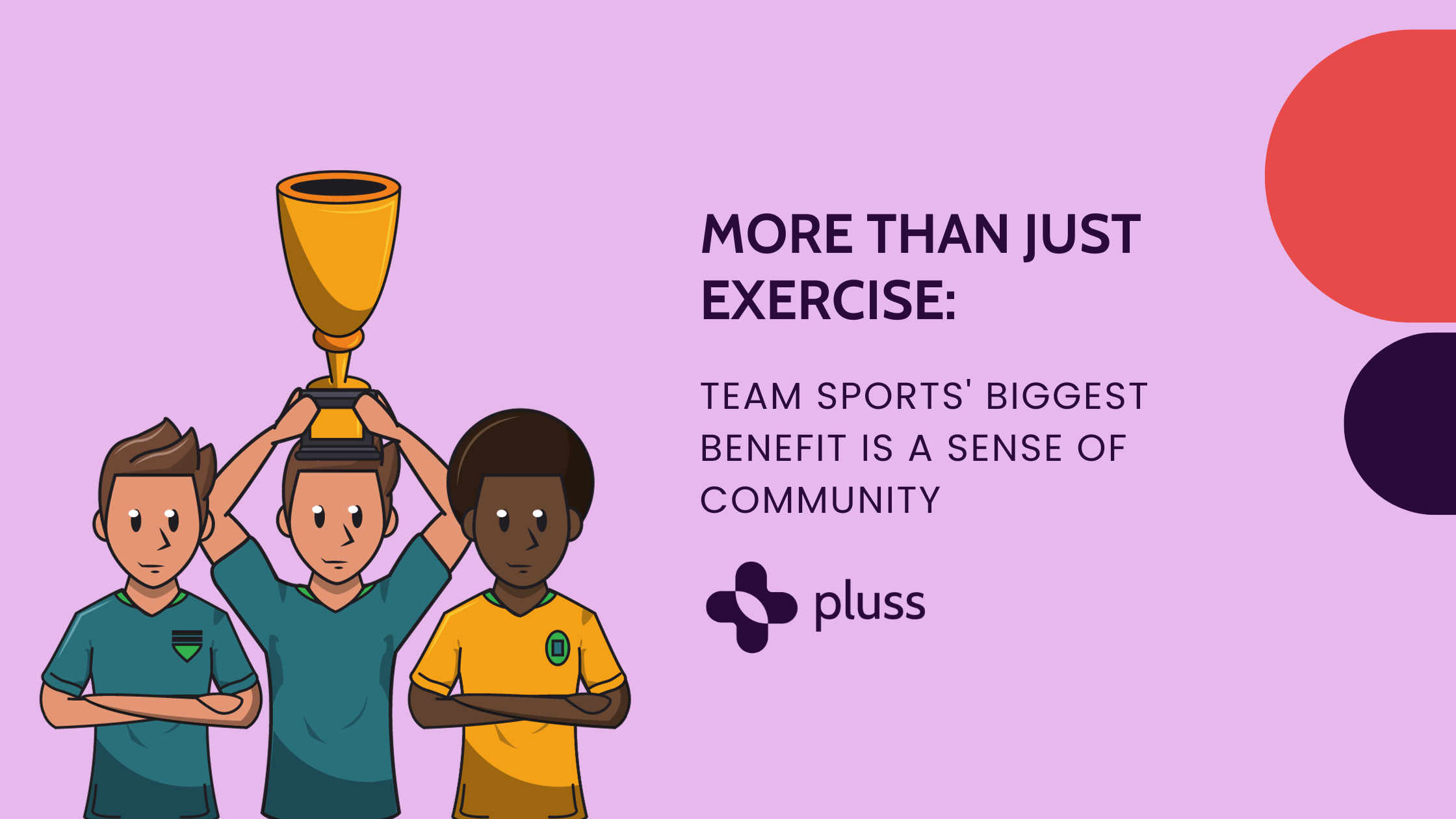More than just exercise: Team sports' biggest benefit is a sense of community
Sport is about more than just, well, sport. It's about community, purpose, teamwork and much more.
Research into the impact of sport on individuals finds that the biggest benefits from being part of a local sporting club or team go far beyond the physical. Athletes who experience a sense of community within their sporting club are less likely to binge drink, take drugs, have better average mental health ratings, are more likely to have positive educational outcomes, and are generally more successful.
The findings show time and time again that an increased sense of community is associated with increased health, and participation in sport is highly associated with forming that sense of community.
The importance of sporting communities.
In our changing world, communities are becoming less geographically based and more interest focussed. These interest based communities provide the new basis for collective social experiences, and sport is one of the few prevailing institutions that continuously provides this.
‘Community sport adds a crucial layer to simple health and fitness – that of social cohesion and social capital. It’s the package of club and team atmosphere, combined with physical benefits, that feels irreplaceable.’ Dr Jonathan Robertson, Lecturer in Sport Management at Deakin University.
In Australia alone, there are approximately 70,000 sporting clubs nationwide, involving over 3 million volunteers, and at least 5 million players.
Sporting communities play a crucial role in the club economy, individual mental health, and the overall health of the local towns in which they operate. The flow-on effects of a micro-community within a sporting team leads to ongoing positive patterns of behaviour that positively impact the wider community.
How do sporting clubs create a sense of community?
The dynamics of a team sport provide a perfect climate for formation of a sense of community.
In a study of what makes sport effective at creating these communities, researchers found seven (7) key elements that combine to create this intangible concept of a ‘sense of community’ in local sporting teams.
Seven key elements of community in sport
1. Administrative consideration: The expression of care, concern and intentionality of administrators.
2. Common interest: Group dynamics, social networking, and friendships that result from individuals being brought together by common interest.
3. Competition: The challenge to excel against both internal and external rivalries.
4. Equity in decision making: Decisions that demonstrate all community members are treated equal.
5. Leadership opportunities: Informal and formal opportunities to guide and direct others in the community.
6. Social spaces: A common area or facility in which athletes could interact with one another.
7. Voluntary action: Self-fulfilling and self-determining activities resulting from little to no external pressure or incentive.
Why is a sense of community important for the club itself?
On the flip side, creating a sense of community by enabling these seven factors above has major positive implications for the clubs themselves who manage these teams and host the sporting events.
Clubs that have a sense of community have higher member retention, volunteer participation, team, and fan satisfaction, and are more likely to keep their members engaged and paying for their services.
If sport has these benefits, why is participation declining?
Despite sport being described as a ‘social glue’, sporting community participation (and community participation as a whole) is on the decline and has been since at least the 1980s.
As a result, more youth in particular are being left without a sense of purpose or ways to contribute and be involved in their local communities. Significantly, the recent impact of Coronavirus has severely debilitated sporting communities from connecting and forming a sense of community.
An article by Deakin University titled “A Moment In Time For Community Sport” says the decline has long been occurring, but the recent change in the ways we interact may actually give clubs an opportunity to re-engage and re-inspire their members, once again creating a sense of community within their local teams.
“What is clear is the traditional value proposition of organised sport has, at best, been creaking for a number of years. Following the COVID-19 shutdown, community sport has a once-in-a-generation opportunity to re-position and demonstrate its intrinsic values.”
Do you agree that Coronavirus presents an opportunity to pivot and try new ways of engaging your sport team? How have you adapted your sporting team or community sport to re-engage and connect your members?

